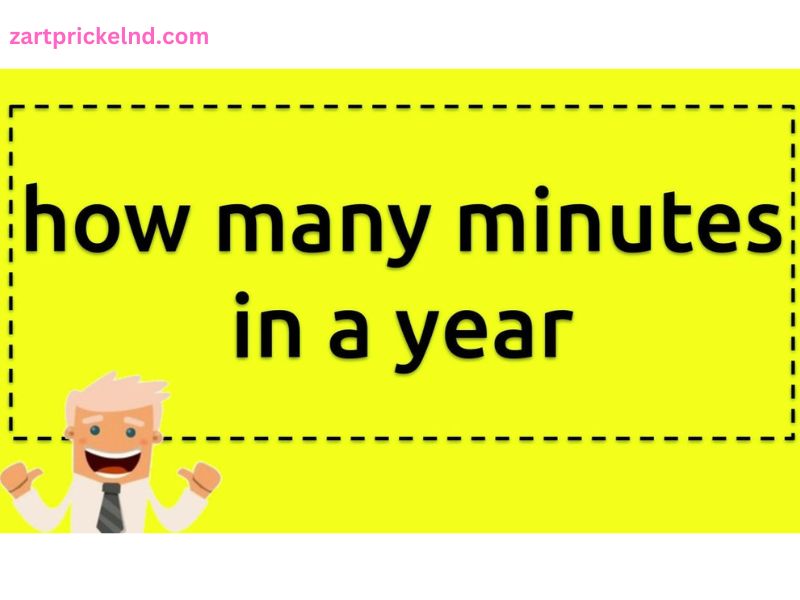Time is a concept that governs every aspect of our lives. From scheduling our daily routines to planning long-term projects, understanding time helps us navigate our daily existence efficiently. One fundamental question that often arises in discussions about time is: “How many minutes are in a year?” This seemingly simple question can lead to interesting calculations and insights about how we measure and perceive time.
Breaking Down the Basics of Time Measurement
To accurately determine how Minutes in a Year, we need to start with the basic units of time measurement. The primary units include:
- Seconds: The smallest standard unit of time, with 60 seconds making up one minute.
- Minutes: Comprised of 60 seconds, and 60 minutes make up one hour.
- Hours: With 60 minutes in an hour, 24 hours make up one day.
- Days: One year consists of approximately 365 days, though this can vary slightly due to leap years.
These units are the building blocks for understanding how many minutes are in a year.
Calculating Minutes in a Standard Year
A standard year, also known as a common year, consists of 365 days. To find out how many minutes are in a standard year, follow these steps:
- Calculate Minutes in a Day:
- Each day has 24 hours.
- Each hour contains 60 minutes.
- Therefore, the total number of minutes in a day is calculated as follows: Minutes in a Day=24 hours/day×60 minutes/hour=1,440 minutes/day\text{Minutes in a Day} = 24 \text{ hours/day} \times 60 \text{ minutes/hour} = 1,440 \text{ minutes/day}
- Calculate Minutes in a Year:
- Multiply the number of minutes in a day by the number of days in a year: Minutes in a Year=1,440 minutes/day×365 days/year=525,600 minutes/year\text{Minutes in a Year} = 1,440 \text{ minutes/day} \times 365 \text{ days/year} = 525,600 \text{ minutes/year}
Thus, there are 525,600 minutes in a standard year.
Understanding Leap Years
Every four years, an extra day is added to the calendar to keep it in alignment with the Earth’s revolutions around the Sun. This extra day is known as a leap day, and it occurs on February 29. Leap years consist of 366 days instead of the usual 365. To account for this additional day, the calculation of minutes in a leap year differs slightly:
- Calculate Minutes in a Leap Year:
- Using the same approach as before: Minutes in a Leap Year=1,440 minutes/day×366 days/year=527,040 minutes/year\text{Minutes in a Leap Year} = 1,440 \text{ minutes/day} \times 366 \text{ days/year} = 527,040 \text{ minutes/year}
So, there are 527,040 minutes in a leap year.
Factors Influencing Time Calculations
While the above calculations provide a general answer, various factors can influence the exact number of minutes in a year. Some of these factors include:
- Variations in Calendar Systems: Different cultures and historical periods have used various calendar systems. The Gregorian calendar, which is the most widely used today, differs from other calendars like the Julian calendar or lunar calendars.
- Timezone Adjustments: Timezone changes and daylight saving adjustments can slightly affect the calculation of minutes over a year, though these are generally minor and often adjusted back to standard time.
- Astronomical Variations: The Earth’s orbit is not a perfect circle but an ellipse, which means that the length of a year can vary slightly. This variation, known as the “tropical year,” averages about 365.2425 days.
Practical Implications
Understanding the number of minutes in a year can have practical implications in various fields:
- Business and Finance: Companies often use time calculations for financial forecasting, payroll processing, and project management. Knowing the exact number of minutes can assist in accurate budgeting and planning.
- Health and Fitness: Tracking time in minutes can be crucial for health and fitness goals. For example, an individual might aim to exercise for a certain number of minutes per week or year.
- Education and Research: In academic settings, understanding time intervals helps in scheduling classes, planning research projects, and managing academic year timelines.
Conclusion
In conclusion, the number of minutes in a year can be calculated with relative simplicity by multiplying the number of minutes in a day by the number of days in the year. For a standard year, this amounts to 525,600 minutes, while a leap year has 527,040 minutes. Despite its apparent simplicity, this calculation can provide valuable insights into how we structure our time and manage various aspects of our lives. Understanding these time measurements helps us appreciate the precision and complexity of our calendars and the systems we rely on for planning and organization.
By exploring these calculations and their implications, we gain a deeper appreciation for the role time plays in our daily lives and the broader universe.



